Commutators ofLittlewood-PaleyOperatorsonHerz Spaces with Variable Exponent
2016-10-24HongbinWangandYihongWu
Hongbin Wangand Yihong Wu
1School of Science,Shandong University of Technology,Zibo,Shandong 255049,China
2Department of Recruitment and Employment,Zibo Normal College,Zibo,Shandong 255130,China
Commutators ofLittlewood-PaleyOperatorsonHerz Spaces with Variable Exponent
Hongbin Wang1,∗and Yihong Wu2
1School of Science,Shandong University of Technology,Zibo,Shandong 255049,China
2Department of Recruitment and Employment,Zibo Normal College,Zibo,Shandong 255130,China
.Let Ω∈L2(Sn-1)be homogeneous function of degree zero and b be BMO functions.In this paper,we obtain some boundedness of the Littlewood-Paley Operators and their higher-order commutators on Herz spaces with variable exponent.
Herz space,variable exponent,commutator,area integral,Littlewood-Paley gλ∗function.
AMS Subject Classifications:42B25,42B35,46E30
1 Introduction
The theory of function spaces with variable exponent has extensively studied by researchers since the work of Kov´aˇcik and R´akosn´ık[7]appeared in 1991.In[9]and[10],the authors proved the boundedness of some Littlewood-Paley operators on variable Lpspaces,respectively.
Given anopenset E⊂Rn,and ameasurable function p(·):E-→[1,∞),Lp(·)(E)denotes the set of measurable functions f on E such that for some λ>0,

This set becomes a Banach function space when equipped with the Luxemburg-Nakano norm



Define P0(E)to be set of p(·):E-→(0,∞)such that

Define P(E)to be set of p(·):E-→[1,∞)such that

Denote p′(x)=p(x)/(p(x)-1).

where Br(x)={y∈Rn:|x-y|<r}.Let B(Rn)be the set of p(·)∈P(Rn)such that the Hardy-Littlewood maximal operator M is bounded on Lp(·)(Rn).In addition,we denote the Lebesgue measure and the characteristic function of a measurable set A⊂Rnby|A| and χArespectively.The notation f≈g means that there exist constants C1,C2>0 such that C1g≤f≤C2g.
In variable Lpspaces there are some important lemmas as follows.
Lemma 1.1.If p(·)∈P(Rn)and satisfies

and

then p(·)∈B(Rn),that is the Hardy-Littlewood maximal operator M is bounded on Lp(·)(Rn).
Lemma 1.2(see[7]).Let p(·)∈P(Rn).If f∈Lp(·)(Rn)and g∈Lp′(·)(Rn),then fg is integrable on Rnand

where

This inequality is named the generalized H¨older inequality with respect to the variable Lpspaces.
Lemma 1.3(see[5]).Let q(·)∈B(Rn).Then there exists a positive constant C such that for all balls B in Rnand all measurable subsets S⊂B,

where δ1,δ2are constants with 0<δ1,δ2<1.
Throughout this paper δ1,δ2is the same as in Lemma 1.3.
Lemma 1.4(see[5]).Suppose q(·)∈B(Rn).Then there exists a constant C>0 such that for all balls B in Rn,

Next we recall the definition of the Herz-type spaces with variable exponent.Let Bk={x∈Rn:|x|≤2k}and Ak=BkBk-1for k∈Z.Denote Z+and N as the sets of all positive and non-negative integers,χk=χAkfor k∈Z,˜χk=χkif k∈Z+and˜χ0=χB0.


where



where

Supposethat Sn-1is the unit sphereof Rn(n≥2)equipped with normalized Lebesgue measure.Let Ω∈L1(Rn),be homogeneous function of degree zero and





and

Motivated by[8,9],we will study the boundedness for the Littlewood-Paley operators and their commutators on the Herz space with variable exponent,where Ω∈L2(Sn-1).
2 Estimate for the Littlewood-Paley operators

A nonnegative locally integrable function ω on Rnis said to belong to Ap(1<p<∞),if there is a constant C>0 such that

where p′=p/(p-1),Q denotes a cube in Rnwith its sides parallel to the coordinate axes and|Q|denotes the Lebesgue measure of Q.

Lemma2.1(see[3]).Suppose that Ω∈Ls(Sn-1)(s>1)satisfying(1.3).Ifω∈Ap/β,max{s′,2}= β<p<∞,then there is a constant C,independent of f,such that


Now we give the main theorem in this section.


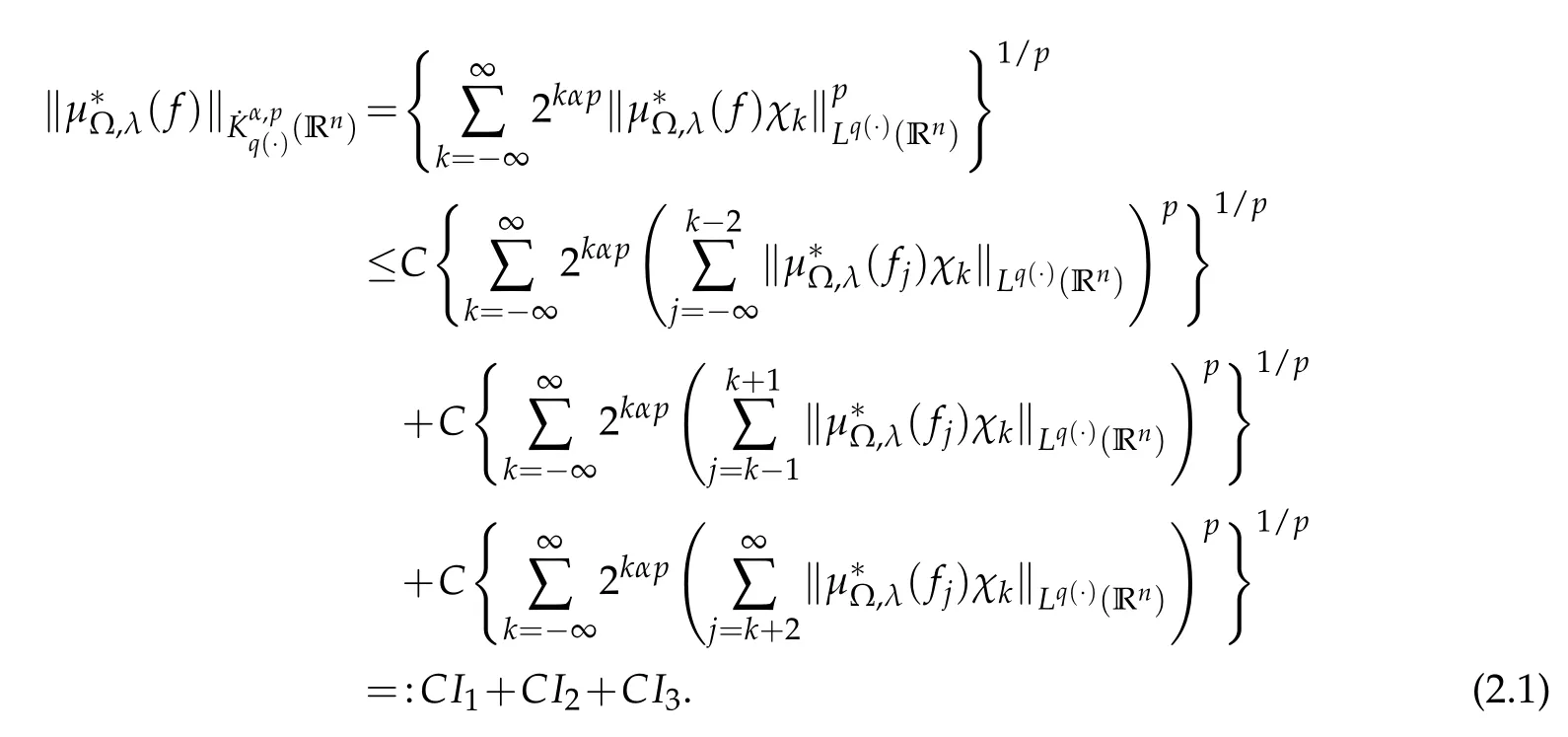

we have

Now we estimate I1.By the Minkowski inequality we have
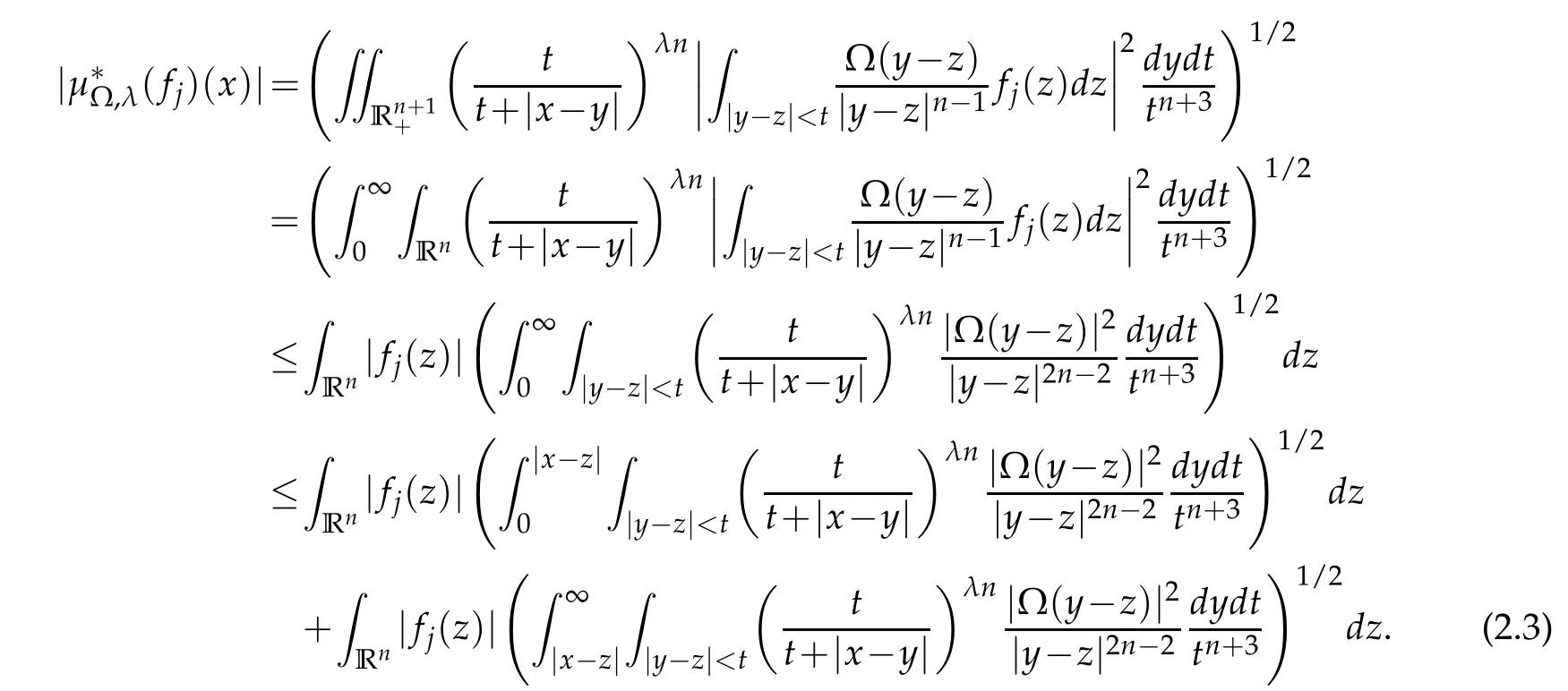
Note that z∈Ajand|y-z|<t.So we know that|y-z|~|y|,then for Ω∈L2(Sn-1)we have

For λ>2,we take 0<θ<(λ-2)n.Since|x-z|≤|x-y|+|y-z|≤|x-y|+t,by(2.4)we have
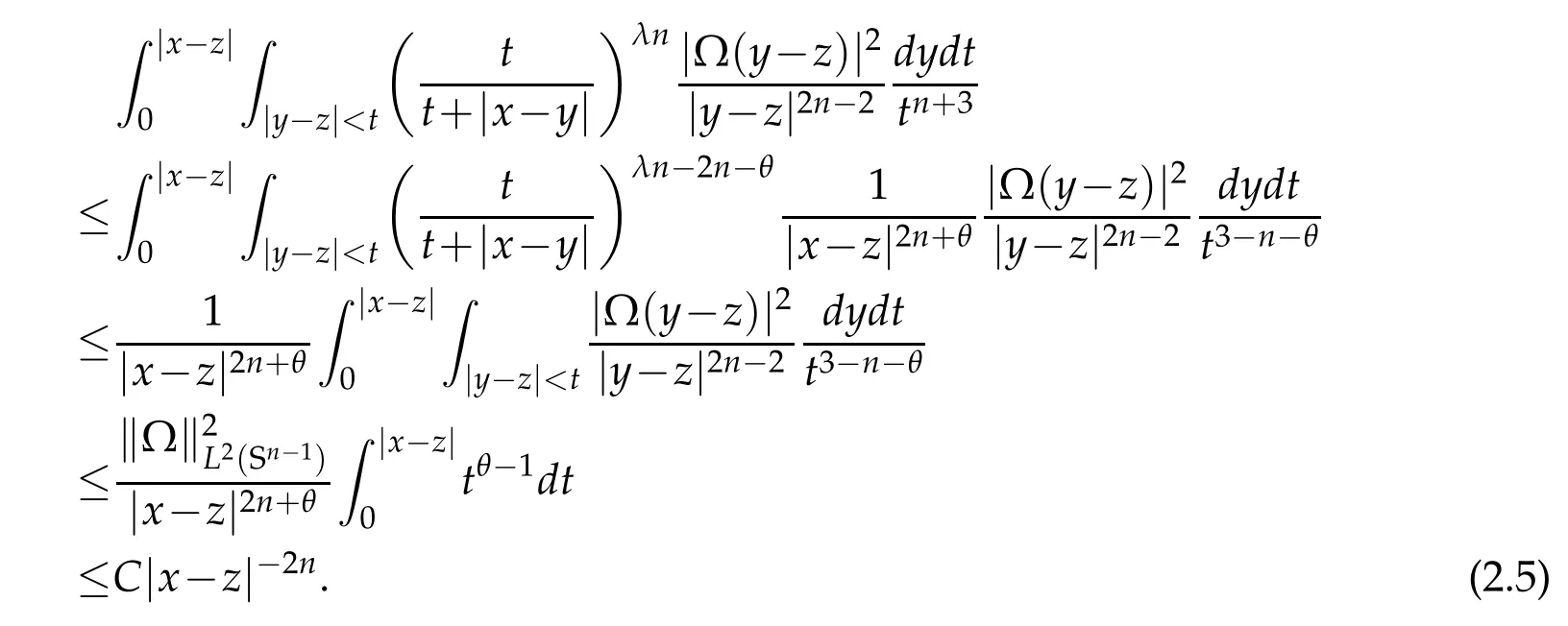
Similarly,noting that|y-z|~|y|,by(2.4)we have


Note that x∈Ak,z∈Ajand j≤k-2.By(2.5),(2.6)and the generalized H¨older inequality we have

By Lemma 1.3 and Lemma 1.4,we have
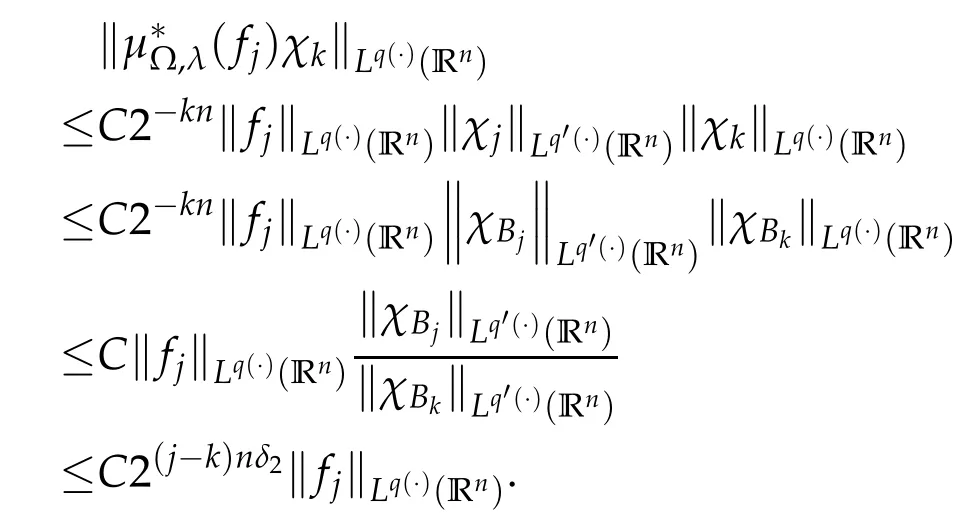
Thus we obtain

If 1<p<∞,take 1/p+1/p′=1.Since nδ2-α>0,by the H¨older inequality we have
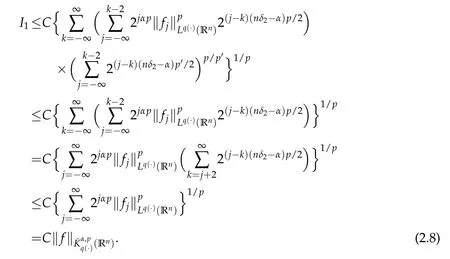
If 0<p≤1,then we have

Let us now estimate I3.Note that x∈Ak,y∈Ajand j≥k+2,so we have|y-z|~|y|. By(2.3)-(2.6)and the generalized H¨older inequality we have

By Lemma 1.3 and Lemma 1.4,we have
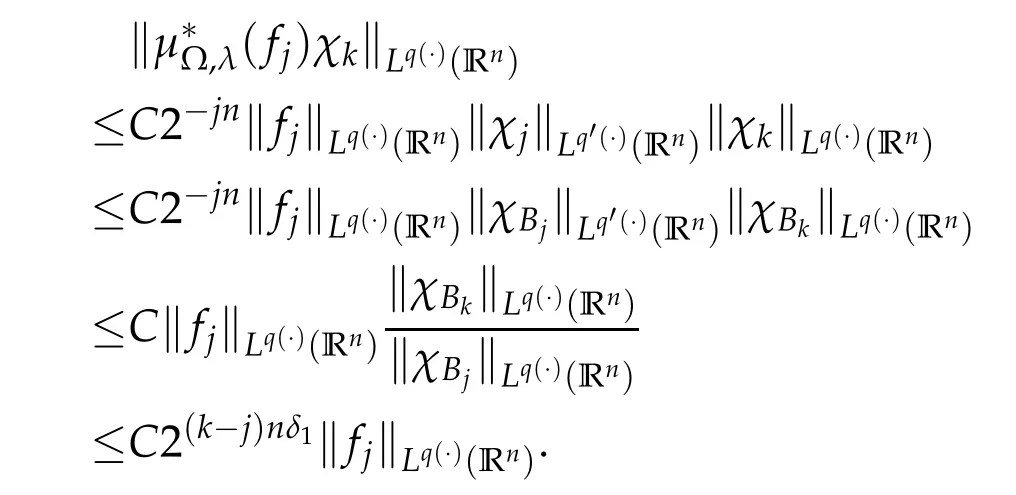
Thus we obtain

If 1<p<∞,take 1/p+1/p′=1.Since nδ1+α>0,by the H¨older inequality we have
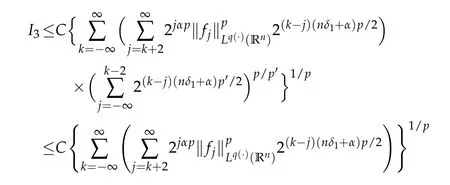

If 0<p≤1,then we have

Therefore,by(2.1),(2.2),(2.8),(2.9),(2.11)and(2.12),we complete the proof of Theorem 2.1.
3 BMO estimate for the commutators of Littlewood-Paley operators
Let us first recall that the space BMO(Rn)consists of all locally integrable functions f such that

where fQ=|Q|-1RQf(y)dy,the supremum is taken over all cubes Q⊂Rnwith sides parallel to the coordinate axes and|Q|denotes the Lebesgue measure of Q.
Let b∈BMO(Rn).The weighted(Lp,Lp)boundedness of[b,µΩ]have been proved by Ding,Lu and Yabuta[4].
Lemma 3.1(see[4]).Suppose that Ω∈Ls(Sn-1)(s>1)satisfying(1.3).For an integer m≥1,if b∈BMO(Rn)and ω∈Ap/β,max{s′,2}=β<p<∞,then there is a constant C,independent of f,such thatZ

and

By Lemma 3.1 and Lemma 2.2,it is easy to get the(Lp(·)(Rn),Lp(·)(Rn))-boundedness of the commutators[bm,µΩ,S]and[bm,µ∗Ω,λ].
Next,we will give the corresponding result about the commutator[b,µΩ]on Herztype Hardy spaces with variable exponent.

In the proof of Theorem 3.1,we also need the following lemma.
Lemma 3.2(see[6]).Let p(·)∈B(Rn),m be a positive integer and B be a ball in Rn.Then we have that for all b∈BMO(Rn)and all j,i∈Z with j>i,

where Bi={x∈Rn:|x|≤2i}and Bj={x∈Rn:|x|≤2j}.


Then we have
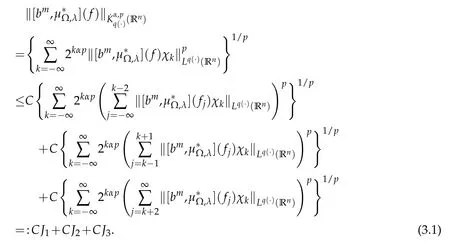

Now we estimate J1.By the Minkowski inequality we have
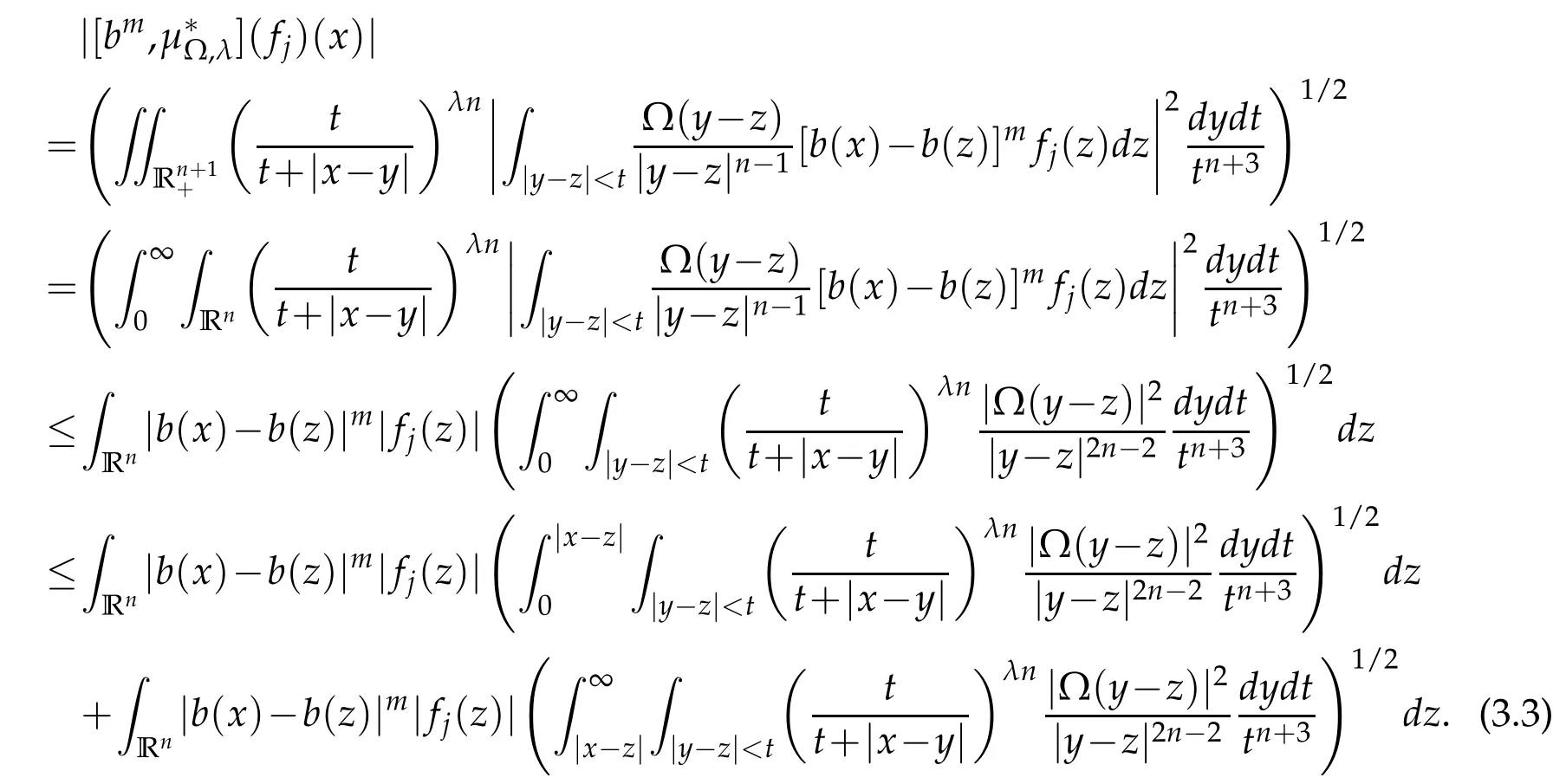
Note that x∈Ak,z∈Ajand j≤k-2.By(2.5),(2.6)and the generalized H¨older inequality we have

By Lemma 1.3,Lemma 1.4 and Lemma 3.2 we have


Thus we obtain

If 1<p<∞,take 1/p+1/p′=1.Since nδ2-α>0,by the H¨older inequality we have
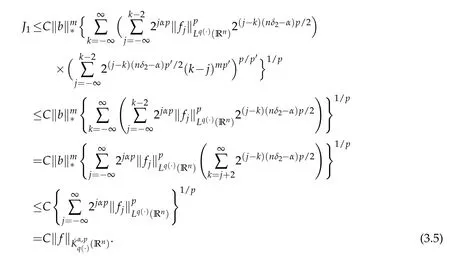
If 0<p≤1,then we have

Let us now estimate J3.Note that x∈Ak,y∈Ajand j≥k+2,so we have|y-z|~|y|.
Similar to(3.4),we get

By Lemma 1.3,Lemma 1.4 and Lemma 3.2,we have
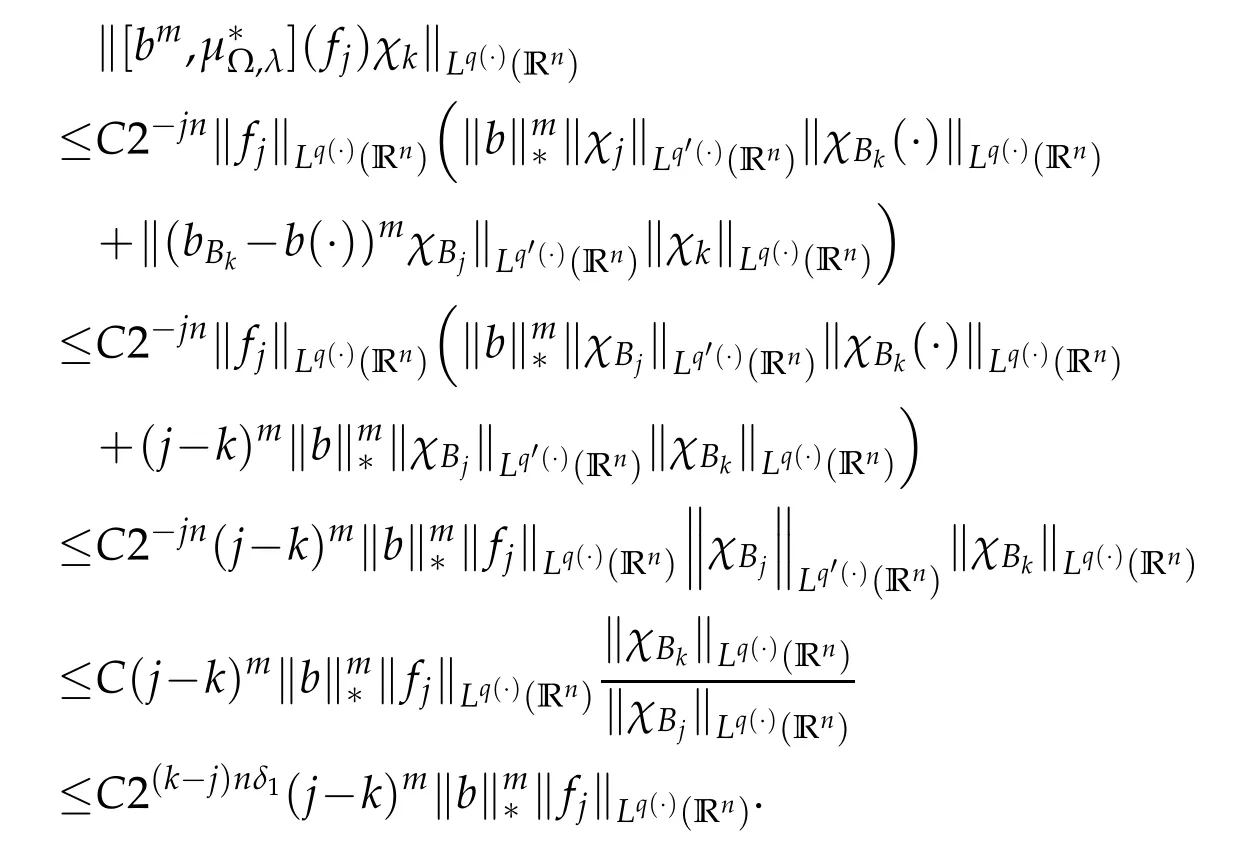
Thus we obtain

If 1<p<∞,take 1/p+1/p′=1.Since nδ1+α>0,by the H¨older inequality we have
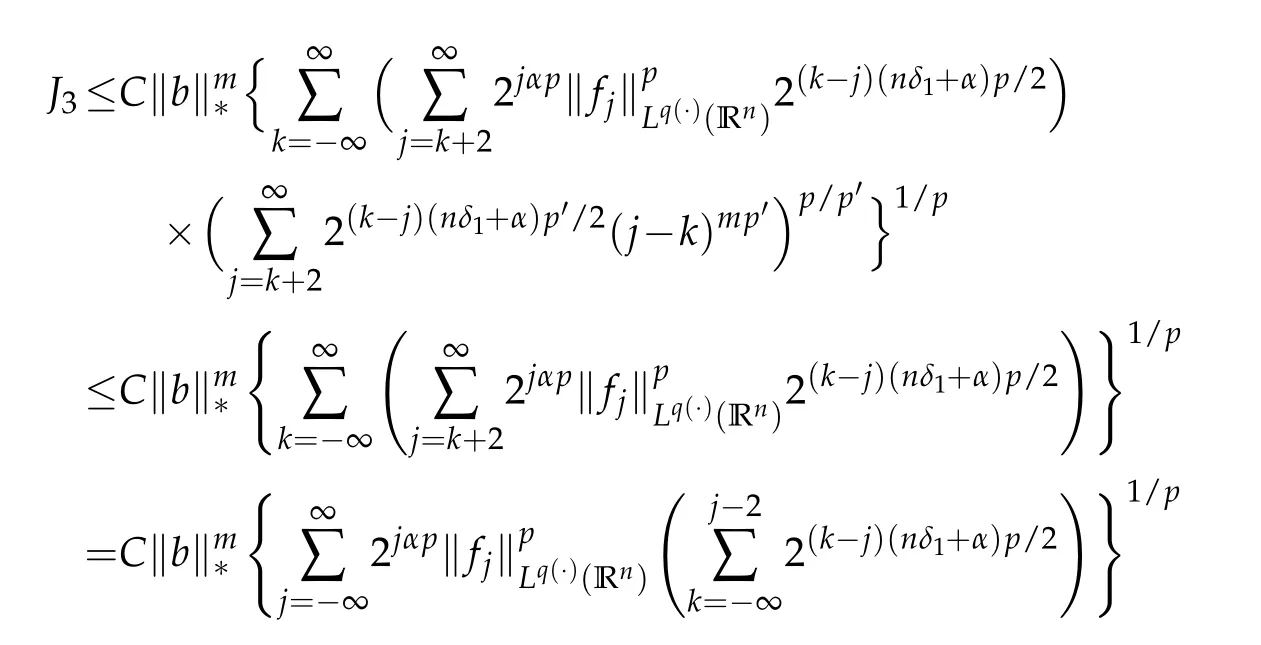

If 0<p≤1,then we have

Therefore,by(3.1),(3.2),(3.5),(3.6),(3.8),(3.9),we complete the proof of Theorem 3.1.
Since[bm,µΩ,S](f)(x)≤Cλ[bm,µ∗Ω,λ](f)(x),we easily obtain the following theorem.

Acknowledgments
The authors are very grateful to the referees for their valuable comments.
[1]C.Capone,D.Cruz-Uribe and A.Fiorenza,The fractional maximal operator and fractional integrals on variable Lpspaces,Rev.Mat.Iberoamericana,23(2007),743-770.
[2]D.Cruz-Uribe,A.Fiorenza,J.M.Martell and C.P´erez,The boundedness of classical operators on variable Lpspaces,Ann.Acad.Sci.Fen.Math.,31(2006),239-264.
[3]Y.Ding,D.Fan and Y.Pan,Weighted boundedness for a class of rough Marcinkiewicz integral,Indiana Univ.Math.J.,48(1999),1037-1055.
[4]Y.Ding,S.Luand K.Yabuta,On commutators of Marcinkiewiczintegrals with rough kernel,J.Math.Anal.Appl.,275(2002),60-68.
[5]M.Izuki,Boundedness of sublinear operators on Herz spaces with variable exponent and application to wavelet characterization,Anal.Math.,36(2010),33-50.
[6]M.Izuki,Boundedness of commutators on Herz spaces with variable exponent,Rend.del Circolo Mate.di Palermo,59(2010),199-213.
[7]O.Kov´aˇcik and J.R´akosn´ık,On spaces Lp(x)and Wk,p(x),Czechoslovak Math.J.,41(1991),592-618.
[8]Z.Liu and H.Wang,Boundedness of Marcinkiewicz integrals on Herz spaces with variable exponent,Jordan J.Math.Stat.,5(2012),223-239.
[9]H.Wang,Z.Fu and Z.Liu,Higher-order commutators of Marcinkiewicz integrals and fractional integrals on variable Lebesgue spaces,Acta Math.Sci.Ser.A China Ed.,32(2012),1092-1101.
[10]L.Wang and S.Tao,Parameterized Littlewood-Paley operators and their commutators on Lebesgue space with variable exponent,Anal.Theory Appl.,31(2015),13-24.
.Email addresses:wanghb@sdut.edu.cn(H.Wang),wfapple123456@163.com(Y.Wu)
11 December 2015;Accepted(in revised version)11 April 2016
杂志排行
Analysis in Theory and Applications的其它文章
- Some Approximation Properties of Certain q-Baskakov-Beta Operators
- On Growth of Polynomials with Restricted Zeros
- Box Dimension of Weyl Fractional Integral of Continuous Functions with Bounded Variation
- A Characterization of MRA Based Wavelet Frames Generated by the Walsh Polynomials
- Commutators of Lipschitz Functions and Singular IntegralswithNon-Smooth KernelsonEuclideanSpaces
- Characterizations of Null Holomorphic Sectional Curvature of GCR-Lightlike Submanifolds of Indefinite Nearly K¨ahler Manifolds
